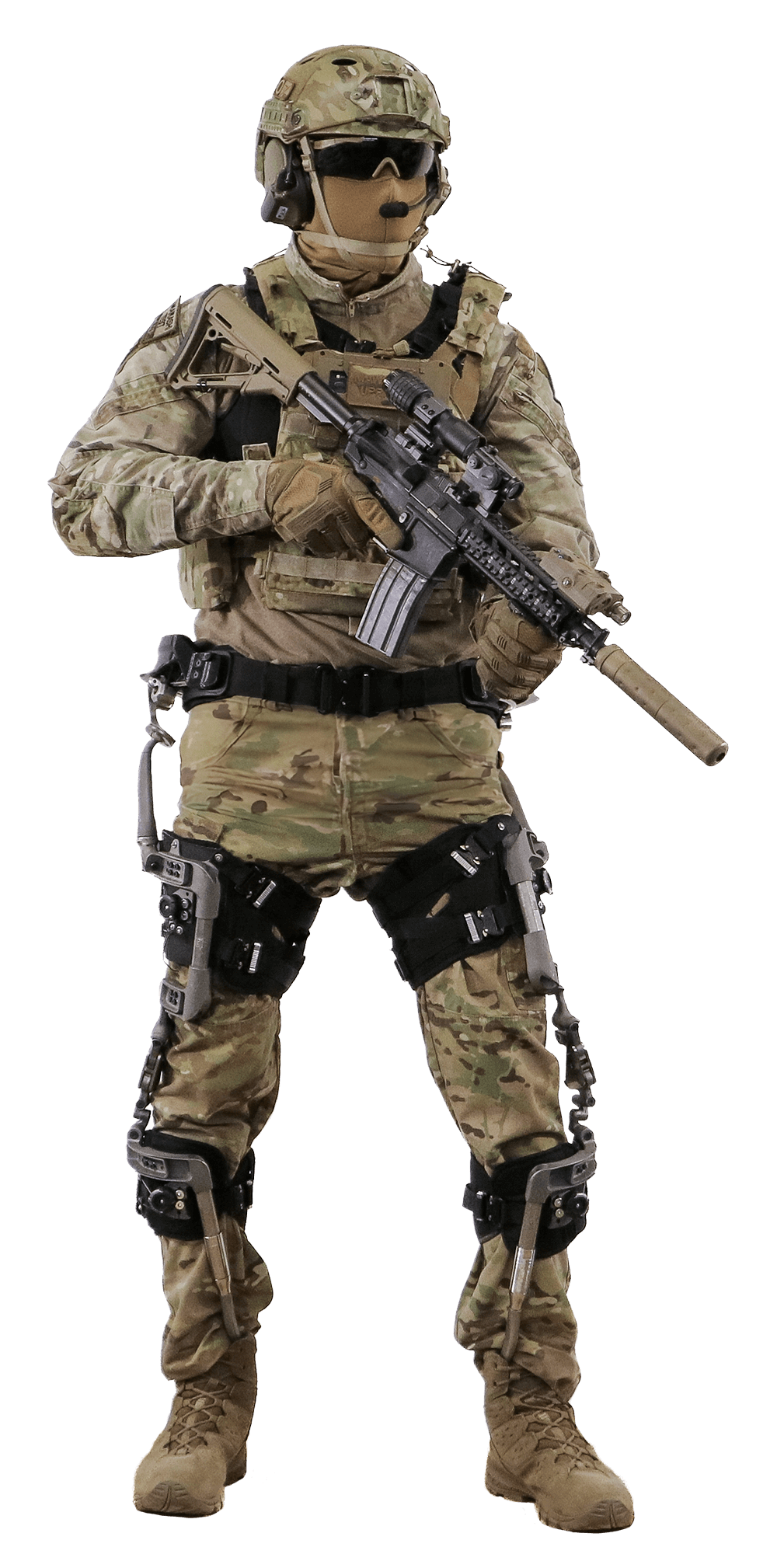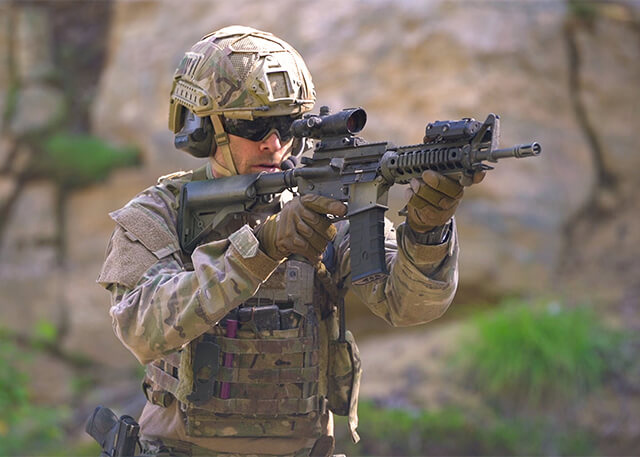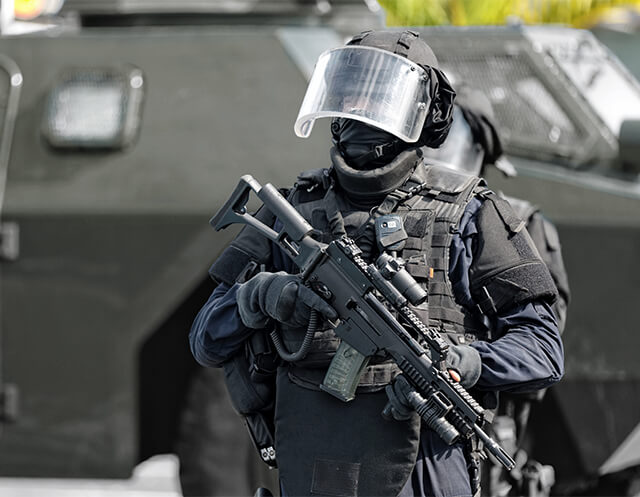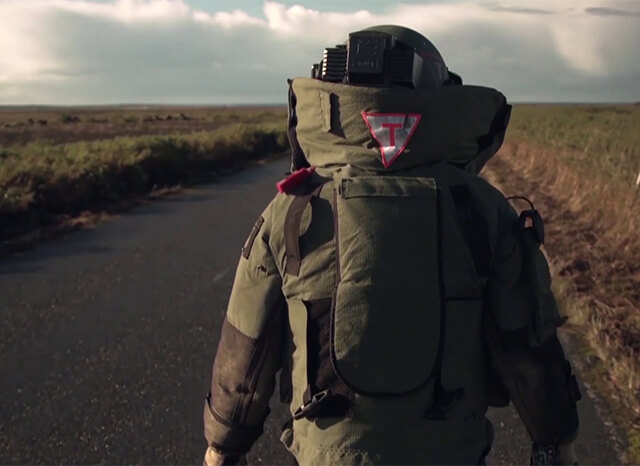Load carriage: a widespread military challenge
Lightening the soldier’s burden sits atop the priorities of armed forces worldwide, and for good reasons. Load carriage is the source of musculoskeletal injuries that can impact at various levels the soldier’s ability to perform his duty.
Load carriage is responsible for various injuries, such as lower back pain, metatarsalgia, bone fractures, knee pain, thoracic outlet syndrome (TOS), and severe blisters.
The load-bearing exoskeleton UPRISE® is a game changer.
Our UPRISE® patented exoskeleton solution
The UPRISE® tactical exoskeleton is a wearable device that assists soldiers in carrying heavy loads by redirecting the weight to the ground through load-bearing structure that overlays the user’s skeleton. No external power source is required. The load is passively redirected through the structure, thereby reducing the physical strain of load carriage.
Results:
Soldiers can carry their equipment with ease while maintaining agility and mobility. They become highly efficient on the battlefield, with all the necessary gear for mission success.
An innovative solution that mades our reputation
In 2014, Mawashi was chosen by the U.S. Department of Special Operations Forces to participate in a project focused on exoskeleton development. It was from this requirement that the first generation of load-bearing exoskeletons, UPRISE®, was born in 2017. Undergoing to the highest levels of military testing, UPRISE® exceeded expectations.

UPRISE® : Unique features
Featuring unmatched ergonomics, advanced load-bearing capacity, and high mobility, the ultralight structure of the passive load-bearing exoskeleton, UPRISE®, provides constant assistance to soldiers while enhancing their combat efficiency. Specifically, the exoskeleton assist the soldier through three primary modules:
A flexible spine modeled after the human body
A sliding belt promoting movement at the waist level
Fully articulated and ergonomic legs
Key benefits

SOLDIER SYSTEM

SPECIAL OPERATIONS AND ELITE UNITS
